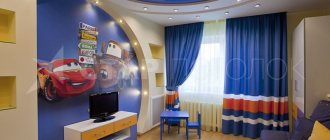The development of printed circuit boards (PCBs) is a key step in the creation of electronic devices. This process requires careful planning and the use of specialized tools. In this article we will look at the main steps and technologies used in the development of printed circuit boards .
1. Creating a Scheme:
- Start by creating an electrical diagram for your device. Use specialized circuit design software such as Eagle, KiCad, or Altium Designer.
2. Component Placement:
- After creating the circuit, start placing components on the future board. Consider component sizes and locations to optimize your manufacturing process.
3. Carrying out Trace:
- Connect the components with wires (routes) in accordance with the electrical diagram. Use automatic routing and manually optimize trace paths to reduce interference and ensure efficiency.
4. Consideration of Electromagnetic Compatibility (EMC) Requirements:
- Ensure EMC compliance by locating routes and components to minimize electromagnetic interference and ensure reliable device operation.
5. Creation of Herbarium and Documentation:
- Generate a herbarium, which is a set of files for the production of PP. Include files for traces, mounting location, template for the soldering process and other necessary documents.
6. Checking for Errors:
- Before sending the PCB to production, carefully check it for errors. Use built-in verification tools in circuit design programs to avoid problems in the manufacturing process.
7. Selection of Production Technology:
- Choose the appropriate PCB production technology depending on your circulation requirements, design complexity and budget. Technologies include milling, etching, and, more commonly, PCB production by etching photo-illuminated sensitive film.
8. Getting a Prototype:
- Before mass production, get a PCB prototype for testing. This will allow potential problems to be identified and corrected before large quantities are produced.
9. Installation and Testing:
- After receiving the PCB, install components and test to verify its functionality. Make sure the device meets the specifications and requirements.
10. Mass production:
- After successful testing, begin mass production of the boards. Monitor production quality and make adjustments if necessary.
PCB development is a complex but integral stage in the creation of electronic devices. Using modern design tools and manufacturing technologies, you can confidently tackle the creation of high-quality and efficient printed circuit boards.











